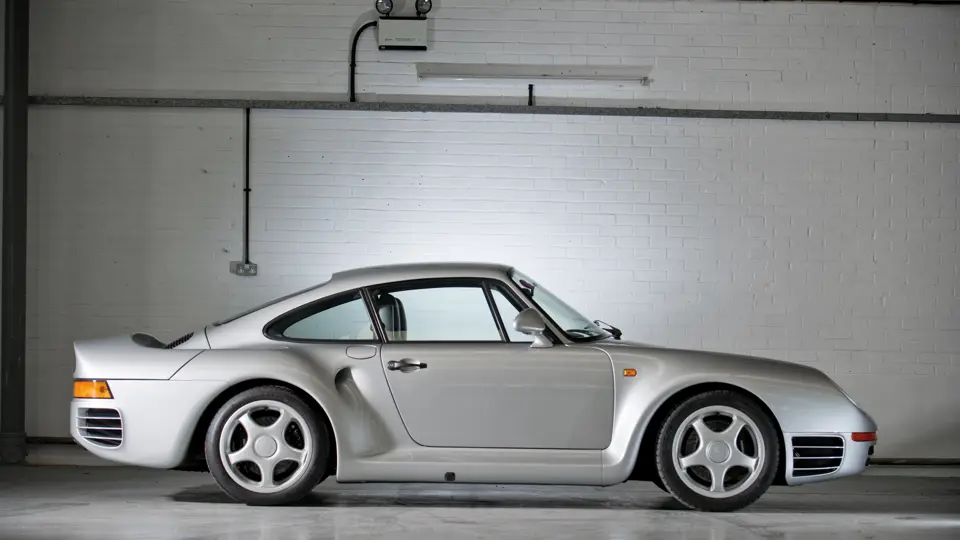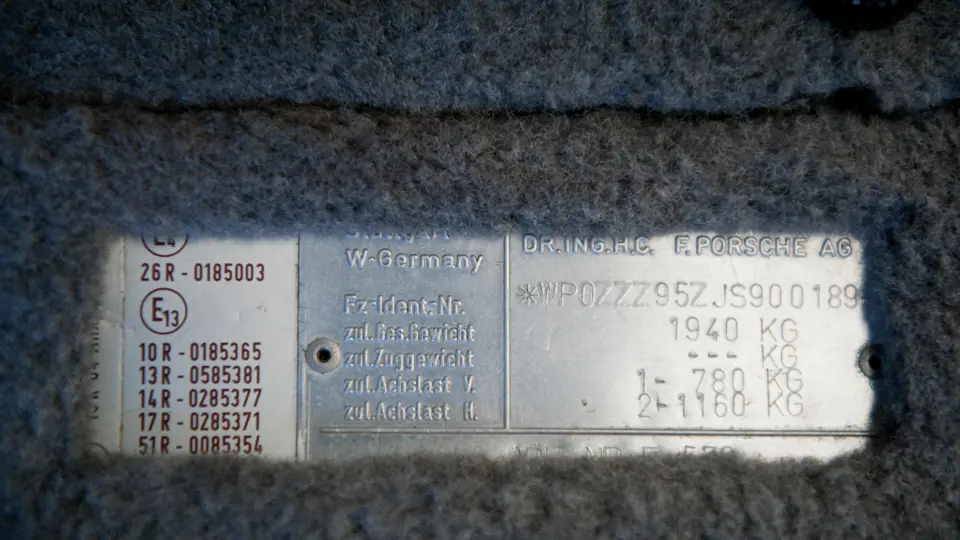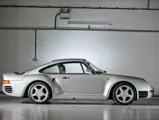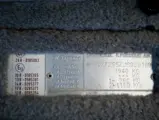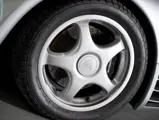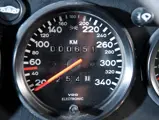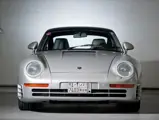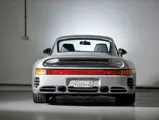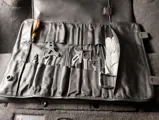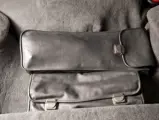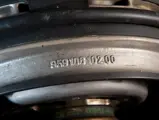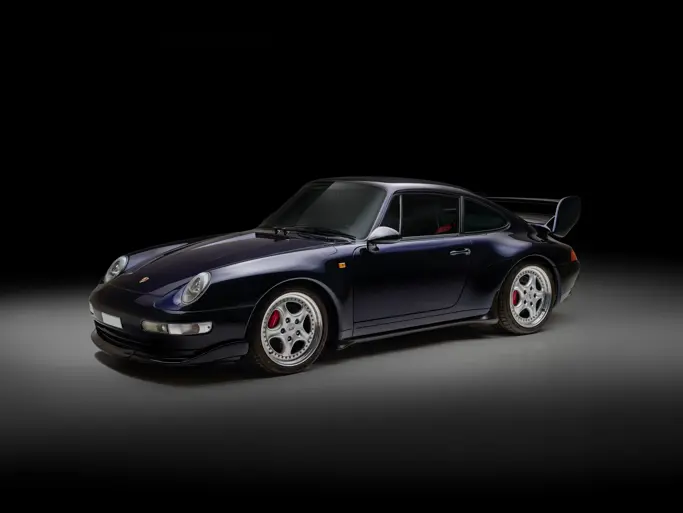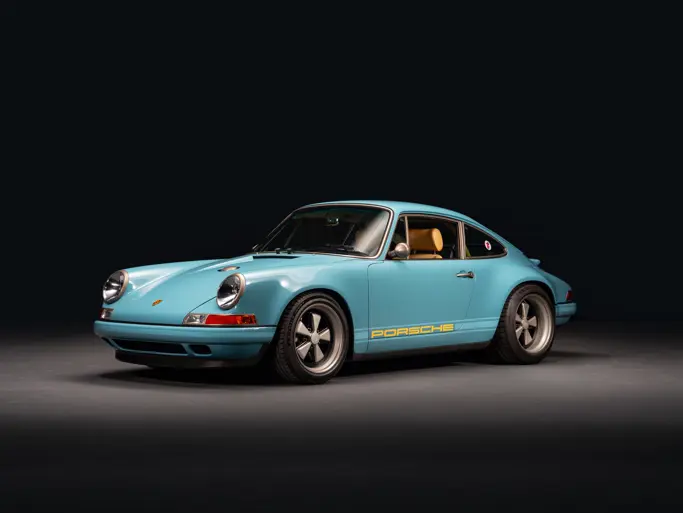450 bhp, air- and liquid-cooled twin-turbo six-cylinder alloy engine, six-speed manual gearbox with all-wheel drive, three-stage traction control and electronically adjustable ride-height and shock absorber control, double wishbone front and rear suspension, and four-wheel disc brakes with ventilated rotors. Wheelbase: 89.4 in.
• Only 651 kilometres from new
• A very desirable road-going ‘Komfort’ model
• One of only 284 examples built
There are only a handful of automobiles that instantly qualify as collectable, irreplaceable artefacts of their time, and Porsche’s 959 stands tall among them. Fewer than 300 were constructed, and many examples, including this ‘Komfort’ coupé, which has clocked a mere 635 kilometres from new, quickly vanished into private collections in Europe, Asia, Latin America, and the Middle East. Back in the early-1980s, a well-heeled and well-connected individual with a yearning to own the world’s fastest and quickest sports car had only one place to look: Porsche. Even access to the appropriate line of credit would not guarantee a spot among the lucky on the waiting list.
The world sat up and took notice when Porsche unveiled the stunning Type 959, or “Gruppe B”, at the 1983 Frankfurt Auto Show. The twin-sequentially turbocharged, all-wheel-drive coupé with its composite body shell was the company’s first supercar—a technological tour de force based on function rather than style. Porsche planned to build at least 200 to homologate the car for the FIA’s then-current Group B Rally series, where many leading European automakers were campaigning ferociously quick and agile racing cars disguised in production-like bodies. Development of the 959 began in 1981, but when Group B was abruptly cancelled in 1986, Porsche had no alternative but to continue its effort to build a small series of luxurious road cars with all-weather capability and the power to beat anything else on the road. Production began in 1987, and a total of 284 examples, including 29 lighter-weight sport versions, would be built, the last in 1992.
Built on the Carrera’s standard 89.4-inch wheelbase steel monocoque tub, the 959’s aluminium/carbon-fibre/Aramid/ FRP body shell was a full six feet wide, 50 inches tall, and 168 inches long overall, about 10 inches longer and a little wider than a stock 911. The 959 was readily identifiable as part of the 911 family, thanks to a passenger cabin barely altered in appearance from a standard Carrera coupé. The polyurethane nose, however, was blunter than that of the production car, while the rear quarters and tail were longer and sleeker, wearing large air inlets and vents and topped by a wide bi-plane spoiler. In spite of the various aero aids, the 959 boasted an enviable drag coefficient of 0.31, thanks in part to its full undertray.
It was underneath that composite shell that the 959’s technical brilliance was hidden. The rear-mounted flat six of 2,849-cubic centimetres used an air-cooled case with water-cooled heads, a system earlier proven on the company’s highly-successful 956 and 962 Group C racers. The pistons were aluminium, and the connecting rods were titanium. The 959’s DOHC cylinder heads carried four valves per cylinder, which were fed by a unique arrangement of twin KKK turbochargers. Operating sequentially, the primary turbo provided boost to about 4000 rpm, when the second turbo reached its operating range, allowing the engine to develop a claimed 450 horsepower at 6500 rpm with .9 bar of boost. Torque was rated at 369 foot-pounds at 5500 rpm. A Motronic engine management system also controlled the car’s many other electronic functions. Power was delivered through a multi-plate clutch and six-speed Borg-Warner gearbox to an advanced Porsche-Steuer-Kupplung all-wheel drive system that constantly and automatically varied torque to be delivered to the front and rear wheels. Under hard acceleration, up to 80% of the available power would be fed to the rear. This system gave the 959 incredible traction and road behaviour.
The 959’s double-wishbone suspension offered three levels of body height adjustment, with both automatic and manual selection. There were two shock absorbers at each wheel, one electrically controlled, the other hydraulically from the engine. To cope with the car’s considerable 3,200 pound weight, large ventilated disc brakes measuring 322 millimetres in front and 308 millimetres in the rear, four-piston alloy callipers, and four-channel ABS were installed. Alloy wheels and run-flat tyres were standard.
The 959 is described as being extremely easy to drive, as docile as any production Carrera at lower speeds, but in the hands of an experienced driver, it is capable of delivering mind-bending acceleration: 0–100 km/h, or 62 mph, in 3.7 seconds, a standing quarter-mile in 11.9, 200 km/h in 13 seconds flat, and a top speed well in excess of 300 km/h for the sport version, and only a hair less in touring form. Until Ferrari’s F40 came along at five times the price and with much less exclusivity, the 959 could boast of being the world’s fastest production car.
Porsche reportedly invested $100 million in the 959 project, and although it sold every one it built, the company lost a huge amount of money on each. What Porsche gained, though, was the practical knowledge that allowed it to introduce a simplified version of the 959’s AWD system in the production 964 Carrera 4 introduced in 1989. All-wheel drive has been a mainstay of the Carrera series ever since.
The current owner of this example bought it from its original Saudi-based owner in 1996, where it had hardly seen any use and was correctly stored off the ground in his collection of supercars. He brought it back to Geneva and stored it for a number of years. It became evident when he finally decided to drive the car that years of non-use had taken their toll. A revival attempt was made, but it was not successful until the owner found himself in the U.S. in 2009, driving a Lamborghini on the Gumball 3000 Rally. A flat tyre in Texas brought him to Boardwalk Porsche in Dallas, where, by good fortune, he found a 959 specialist with the knowledge and access to factory parts needed to repair the car properly. The 959 was immediately air-shipped to Texas, where all its systems were completely restored at great expense. After it was returned to Europe, the owner delivered it to Groupe Segond, the Porsche agent in Monaco, where it was repainted in its original colour of silver, which is complimentary to its original and elegant tri-tone silver and grey leather interior. Comprehensive invoices for all work carried out are provided with the car.
This exotic and barely-used example, chassis number 900189, retains its Saudi registration. In virtually unused condition, this 959 presents the discriminating buyer a rare opportunity to own and enjoy what is certainly one of the greatest road-going supercars ever built.





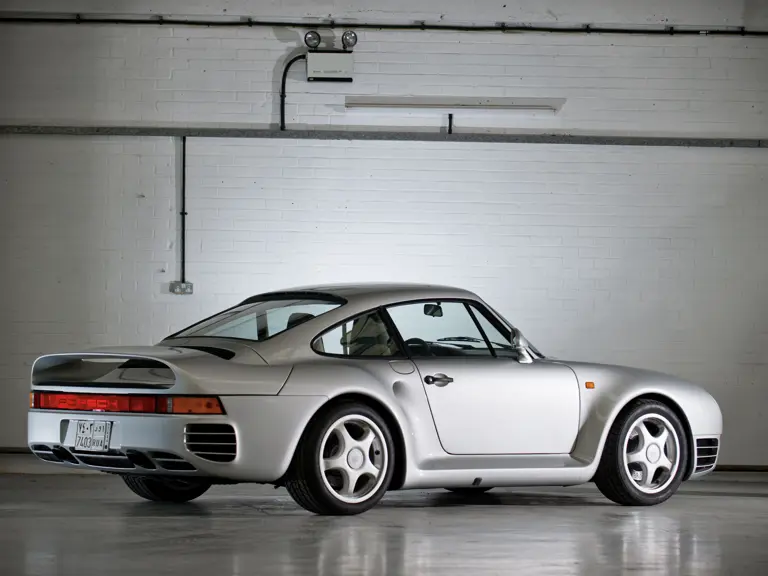
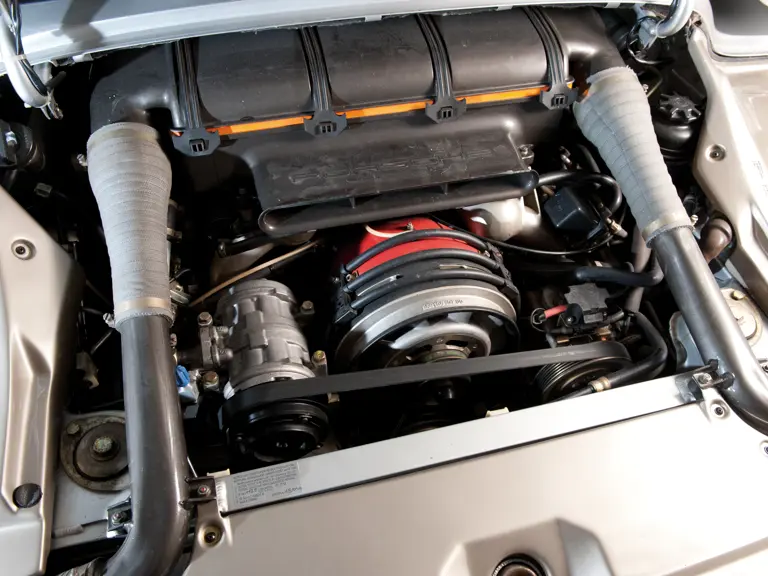
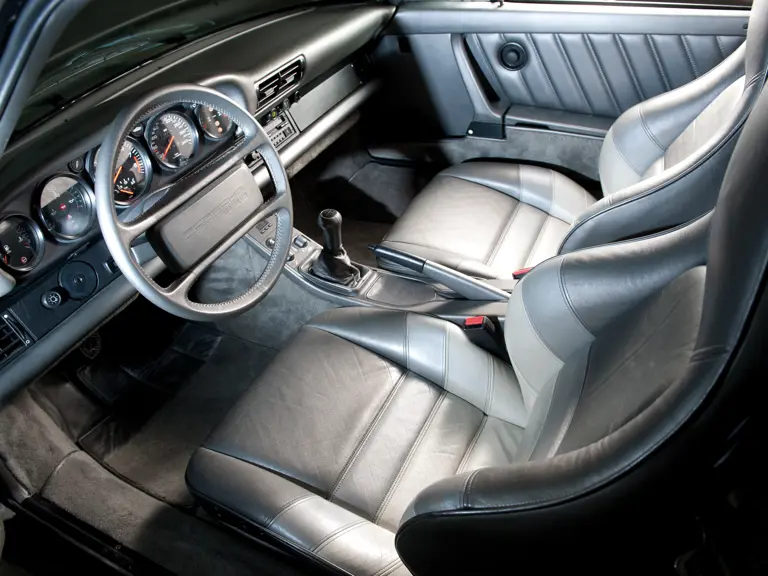
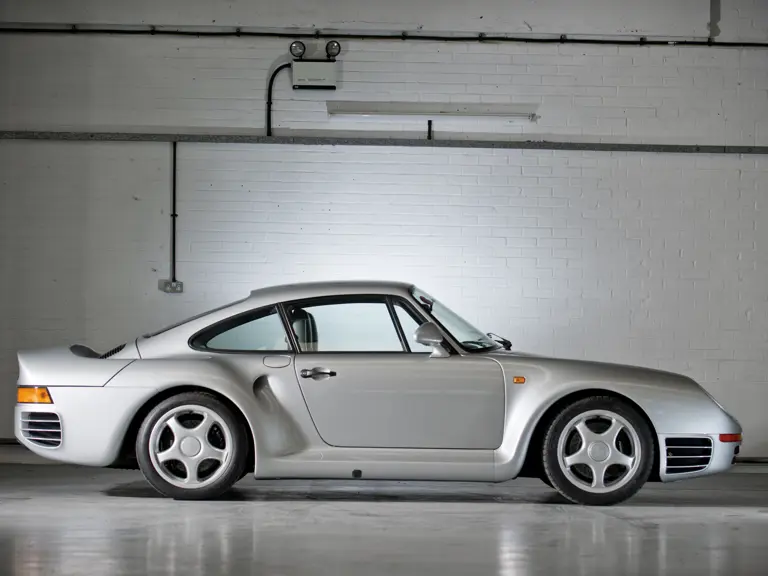
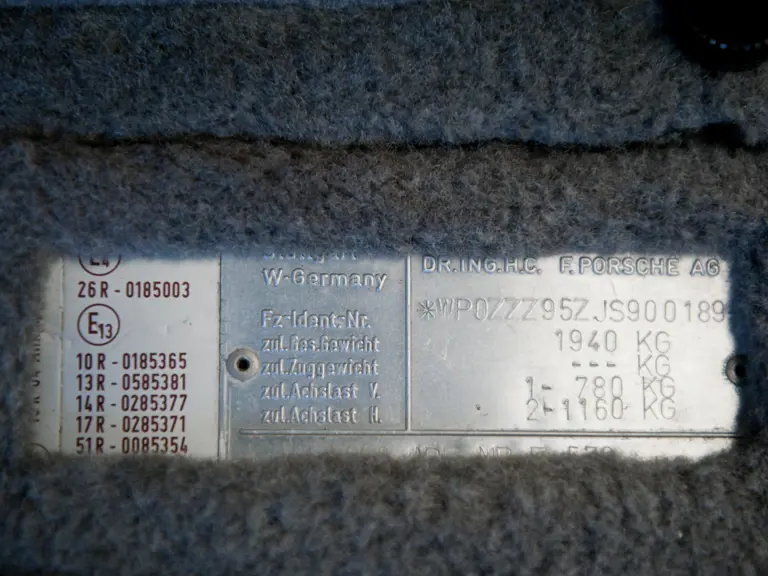
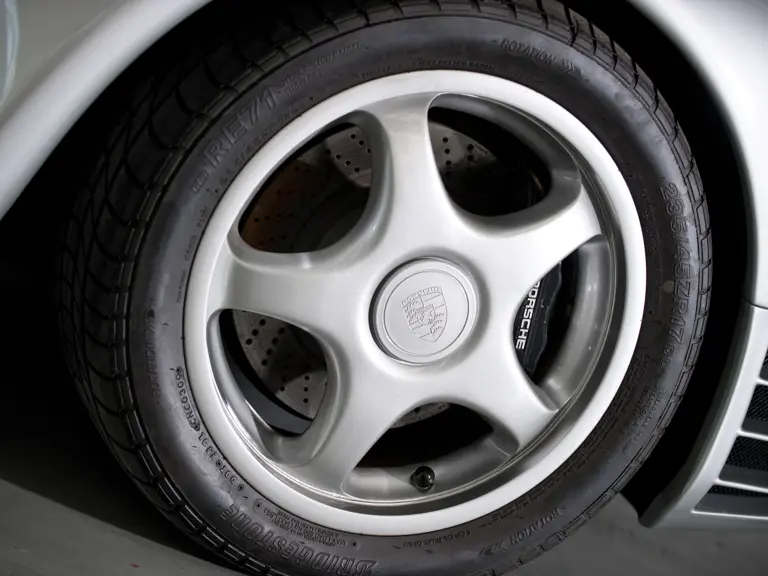
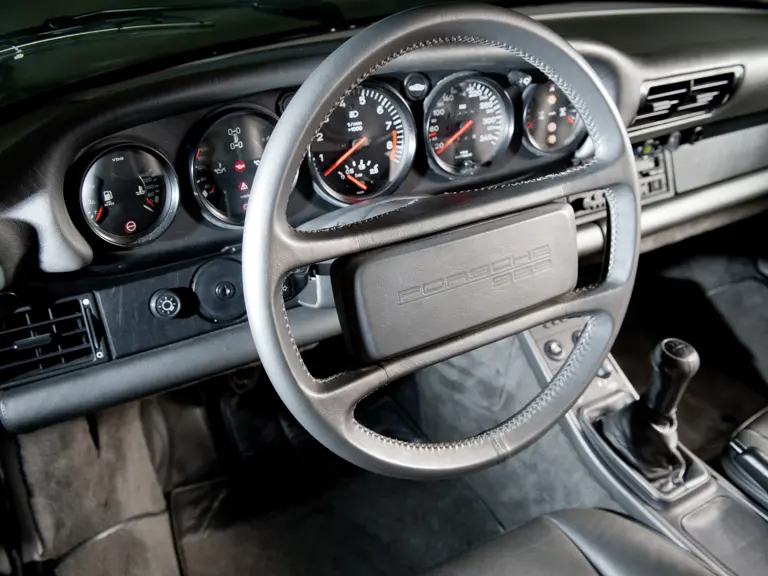
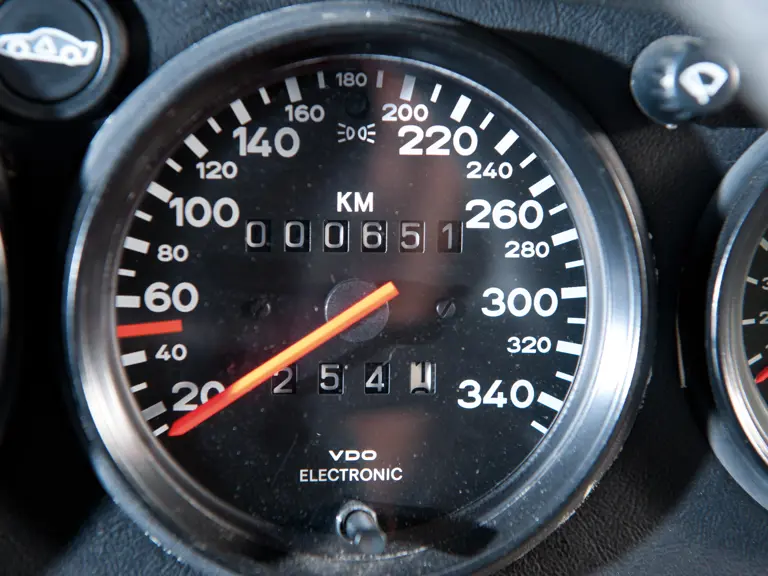
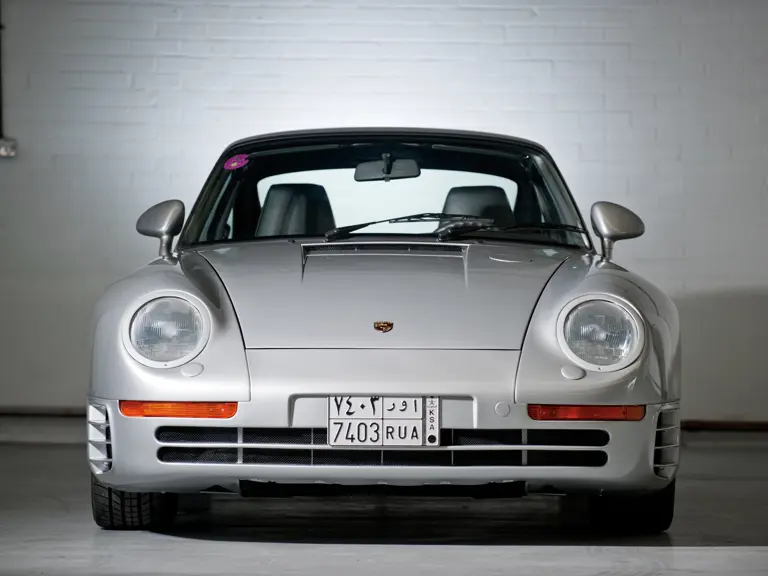

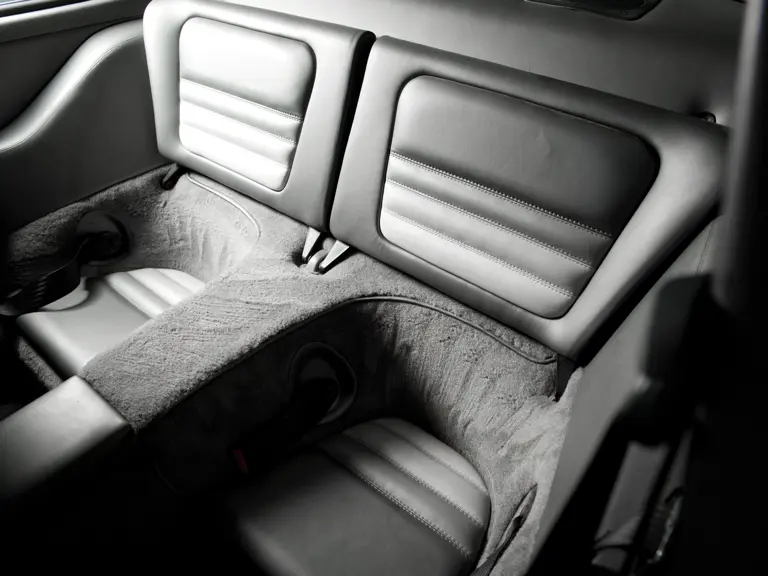

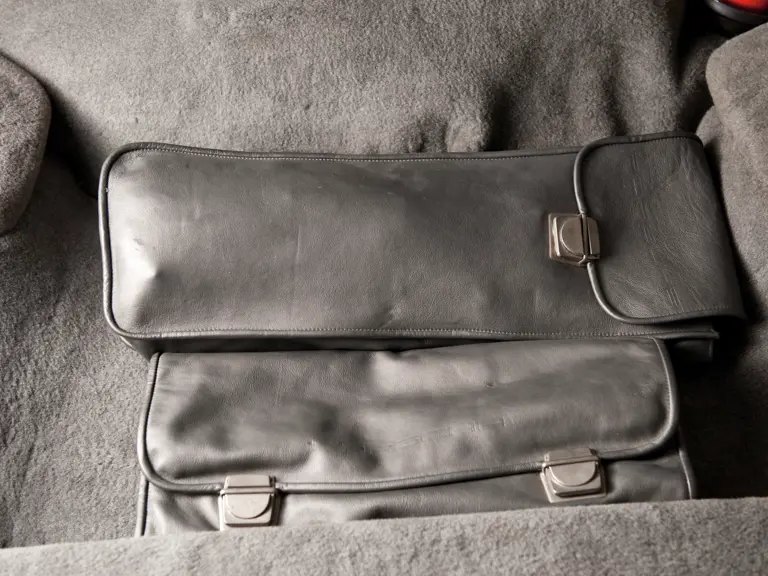
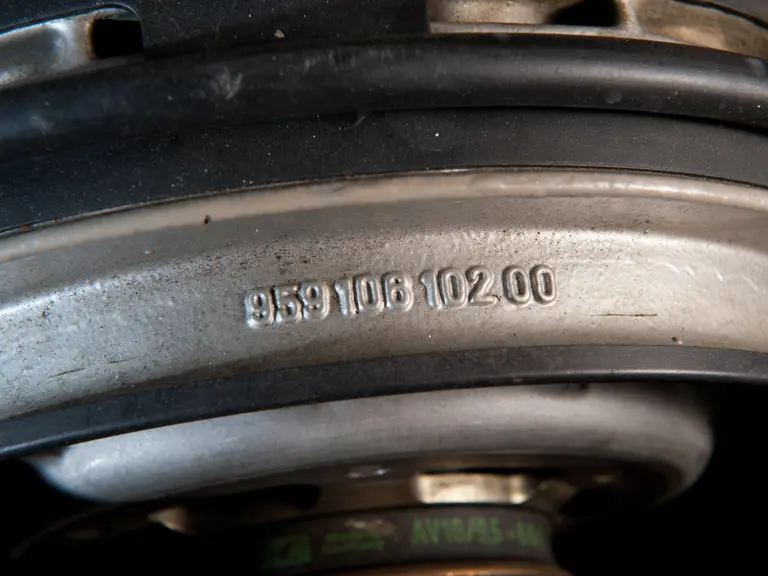
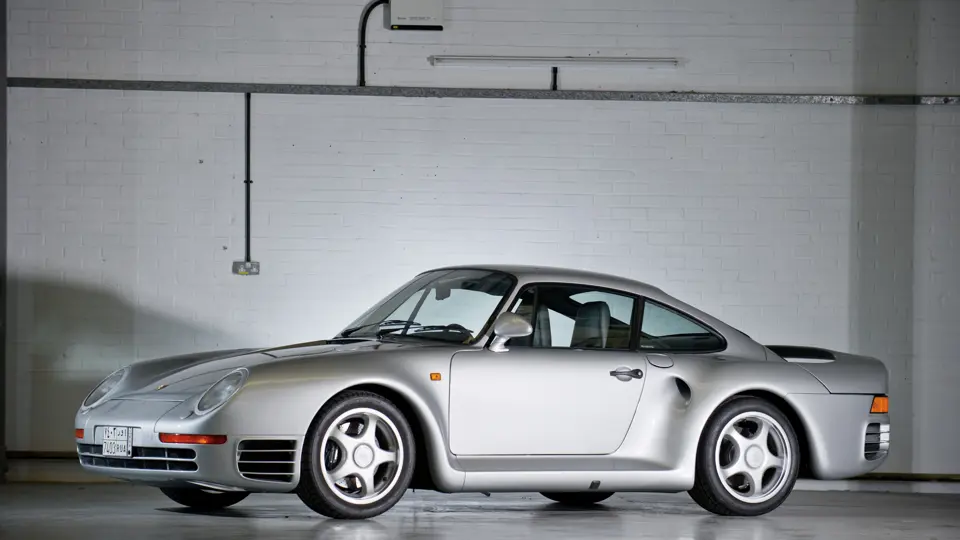
 | London, United Kingdom
| London, United Kingdom
